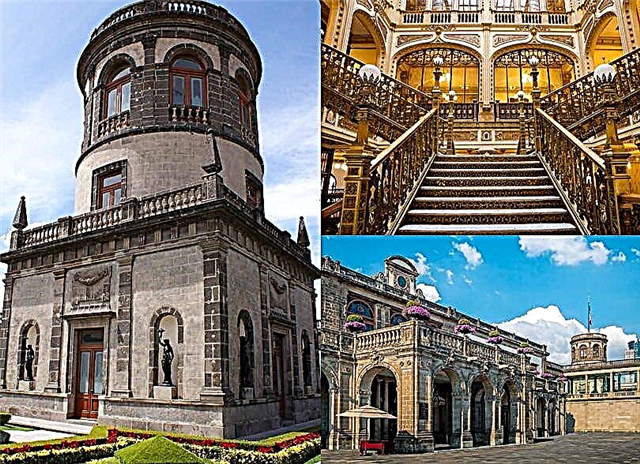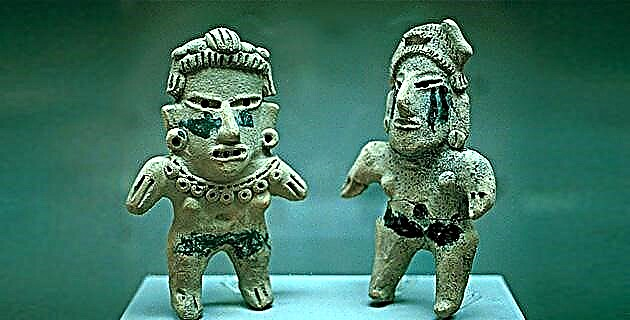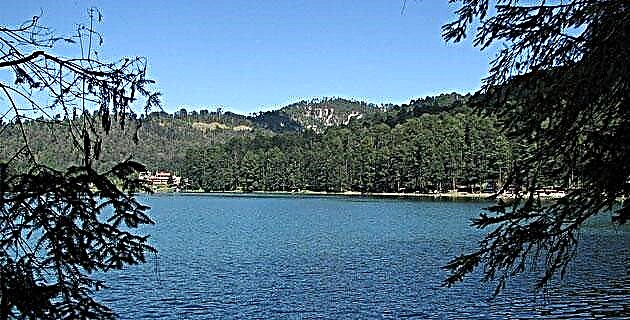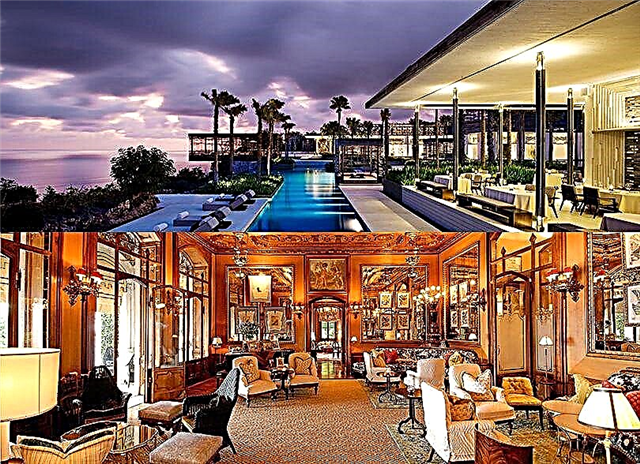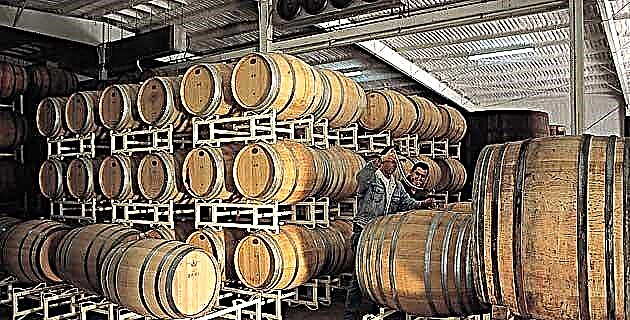
Our country, since pre-Hispanic times, has resorted to engineering to solve social problems and improve the living conditions of the population. Its participation has not only been carried out in the field of inventions and buildings, but also in political and economic decision-making.
Ideas based on reason, which permeated the cultural and scientific environment of European society in the 18th century, quickly became popular in New Spain. Engineering, in particular, underwent severe changes, stopped being a craft activity to become a scientific discipline. In this way, the scientific training of the engineer became an indispensable requirement in any region of the world that aspired to achieve the progress so diffused by the ideas of the Enlightenment.
In 1792, for the first time in the history of education in Mexico, an institution whose teaching was totally scientific was founded, the Real Seminario de Minería. Far from the scholastic tradition, the courses in mathematics, physics, chemistry and mineralogy were officially taught to the first engineers who held the title of Facultative Mining experts, since the term Engineer did not begin to be used in this institution until 1843.
It is important to note that it was two enlightened creoles -representatives of the most powerful union in the Colony, the Miner-, who proposed in 1774 to King Carlos III the creation of a Metallic College, with the intention of increasing the production of precious metals. For this, they considered it essential to have specialists who would solve the problems of the mines, not with an empirical vision, but with scientific bases.
The College of Mining, in addition to distinguishing itself for being the first house of science in Mexico, as the doctor José Joaquín Izquierdo called it, stood out for being the cradle of important scientific institutions such as the Institute of Geophysics, the Institute of Mathematics, the Faculty of Sciences, the Institute of Geology, the Institute of Chemistry, the Institute of Engineering, and the Faculty of Engineering, to mention a few within the National Autonomous University of Mexico.
Some years after our Nation achieved its independence, the College of Mining was integrated into the State, and at its side it shared a tortuous trajectory of changes, instabilities, limitations and shortcomings, among other vicissitudes. Despite this, the engineers accepted with great responsibility their commitment to the country: to help in the organization, administration and development of an impoverished nation divided by bloody wars. His participation went beyond the mere application of engineering, since it also included the political, cultural, economic and even scientific spheres. For example, in the 19th century, engineers held positions as Ministers of Development, Colonization, Industry and Commerce; War and Navy; Relations and Governance to mention some of the most prominent. They founded institutions such as the National Astronomical Observatory, the Institute of Geography and Statistics, which in 1851 would become the Mexican Society of Geography and Statistics; the Geographical Exploration Commission, the National Geological Institute, the Mexican Scientific Commission and the Mexican Geodetic Commission, among others. The needs of the State forced the College to expand its specialties as a mining engineer, assayer, metal beneficiary, and gold and silver separator to those of a surveyor, geographer and, although for a short time, that of a naturalist. The graduates participated in important public works such as the geological exploration of various regions, the preparation of topographic plans and the statistical recognition of various areas of the country, the establishment of a Military College, the recognition of mines, geological studies and the drainage of the Valley of Mexico, analysis of railway projects, etc. Little by little, the need to have a civil engineering degree became evident, the same that Emperor Maximilian of Habsburg wanted to introduce into the College when he tried to transform it into a Polytechnic School.
A modernizing project
With the triumph of the Liberals in 1867, the country began a new stage as an independent country. The changes proposed by the new regime, the political stability and the period of peace achieved for several decades led to a reorganization of the country that favored Mexican engineering.
Benito Juárez introduced the career of civil engineer in 1867, at the same time that he transformed the College of Mining into the Special School of Engineers. This career, like that of mechanical engineer, and the reforms carried out in the study plans of the other teachers, were part of the president's educational strategy to carry out his modernization project, especially in the railway and industrial aspects.
Part of the continuity of the modernizing project led to the strengthening of the School of Engineers. In 1883, President Manuel González transformed it into the National School of Engineers, a name that it would retain until the middle of the 20th century. He created the career of telegrapher, and strengthened the curriculum of the profession of civil engineer, updating the curricula of existing subjects and introducing new ones. The name of the program changed to Engineer of Roads, Ports and Canals, which it kept until 1897. In this year, President Porfirio Díaz promulgated the Law of Professional Education of the School of Engineers, through which he returned to the name of engineer civil, same that is used to this day.
As time has passed, the study plan for the civil engineering career has had to be updated according to scientific and technological advances and the needs of the country.
The College of Civil Engineers of Mexico
The term engineer was used in Renaissance Europe to denote the person who was dedicated to making weapons, building fortifications and inventing artifacts for military use. Those who were dedicated to the construction of public works were called builder, architect, builder, expert, chief and master builder. From the second half of the 18th century, some people who carried out works outside the military began to call themselves “civil engineer”. And, like military engineers, they learned - as in any trade - using empirical and manual methods.
The first school of civil engineering was founded in France in 1747 and was called the School of Bridges and Roads. But it was not until the mid-nineteenth century that those institutions dedicated to imparting complete training in physics and mathematics emerged, which awarded the degree of civil engineer.
Through the creation of associations and institutions civil engineers managed to obtain a respectable place in society: in 1818 the Institution of Civil Engineers of Great Britain was established, in 1848 the Société des Ingénieurs Civils de France, and in 1852 the American Society of Civil Engineers.
In Mexico there was also an interest in founding an Association of Engineers. On December 12, 1867, the engineer and architect Manuel F. Álvarez summoned all civil engineers and architects who wished to participate in said association to a meeting. On that day the statutes were discussed and approved, and on January 24, 1868, the Association of Civil Engineers and Architects of Mexico was inaugurated in the Assembly Hall of the National School of Fine Arts. 35 partners participated and Francisco de Garay remained as president. The Association began to grow; In 1870 it already had 52 associates, and 255 in 1910.
This group became not only the link between Mexican engineers and architects to achieve a better performance of their work, but also served as a communication channel with engineers from other countries. Its foundation led to the arrival of publications from foreign companies, and the sending to them of the official publication of the Association, which began in 1886 and was called the Annals of the Association of Engineers and Architects of Mexico. The existence, likewise, of this association allowed Mexican engineers to participate in foreign academic events, keep up to date on how some common problems were solved in other countries, disseminate the research on some projects being carried out in Mexico, discuss and make proposals. in order to solve various problems.
Towards the end of the 19th century, there was not enough job offer for engineers graduated from the National School of Engineers; they were frequently displaced by foreigners who arrived with foreign companies that invested in the country. However, the civil engineering career remained attractive due to the many jobs that graduates could perform. It was such an influx that the number of students enrolled in the race quickly exceeded that of the others. For example, by 1904, of the 203 registered students, 136 belonged to the civil engineering profession. By 1945 the registered engineers exceeded a thousand students, being mechanical electrical engineering the next most requested career, although this did not reach 200 students.
In fact, in the Association of Civil Engineers and Architects the number of partners in the civil engineering and architecture branch had increased, to the extent that in 1911 they were the majority. By the 1940s, the number was such that it required the founding of its own corporation. This goal became viable in 1945 thanks to the enactment of the Professions Law, which allowed the formation of Professional Associations to help regulate professional practice. After several meetings held at the headquarters of the Association of Engineers and Architects of Mexico, on March 7, 1946, the College of Civil Engineers of Mexico was founded. The challenge was to defend the trade union interests of civil engineers, act as an organ of consultation and dialogue with the State and comply with the professional social service and other regulations proposed by the professions law.
The creation of the College of Engineers had a positive response in a short time. In the year of its foundation it had 158 graduated civil engineers, five years later it already had 659 partners, in 1971 the number reached 178, and in 1992 to 12,256. In 1949 the Civil Engineering magazine began to be published as a dissemination organ, and it continues to be published regularly to date under the name Civil Engineering / CICM.
Although the number of engineers was significant, the support they received from institutions such as the Roads and Irrigation Commission, the Federal Electricity Commission and Petróleos Mexicanos should be highlighted. These opened the doors for Mexican engineers and construction companies to work on large infrastructure works, which in previous decades were carried out by foreign companies and engineers.
With the efforts of its members, the foundation of the College began to demonstrate its usefulness. Several of them interacted with government offices to solve problems within their competence; they defended the interests of the union by opposing the hiring of foreign personnel for certain projects; they promoted the role of the civil engineer and the dimension of the profession in society; they organized national congresses and, in 1949 the I International Congress of Civil Engineering; they collaborated in the founding of the Pan American Union of Engineers Associations (1949) and the Mexican Union of Engineers Associations (1952); instituted the annual Distinguished Students award (1959); they held the senior position of several Secretariats; They created the Dovalí Jaime Cultural Athenaeum (1965) to promote cultural diffusion; participated in the constitution of the Federation of Associations of Civil Engineers of the Mexican Republic of Ocean Resources (1969). They have promoted student scholarships before the National Council of Science and Technology and the Ministry of Foreign Affairs, have given refresher courses and training, managed to establish Engineer's Day (July 1) and establish collaboration agreements with other societies, and founded the National Prize for Civil Engineering (1986).
The spirit of service that has prevailed in the Colegio de Ingenieros Civiles de México and the sustained effort to improve to have better professionals has made engineers participate in great public works, transforming the physiognomy of many places in our country. His active participation, without a doubt, makes him a creditor of a top place in the history of Mexico as a Nation.


